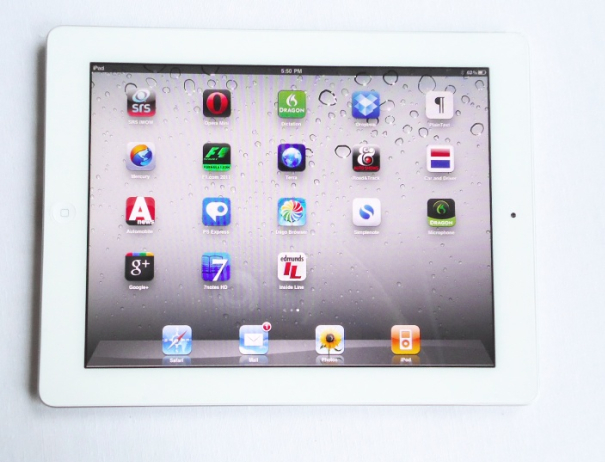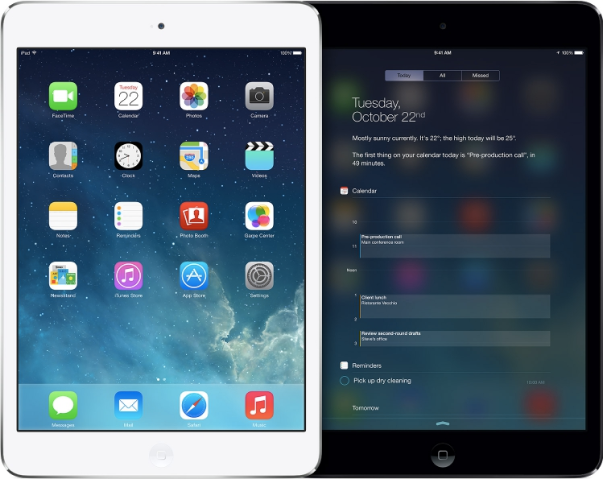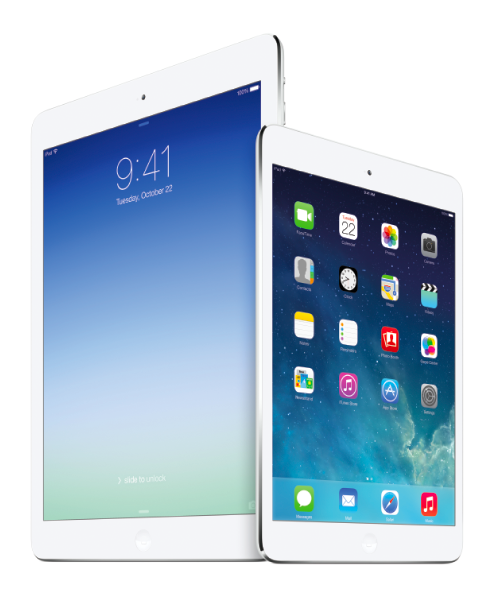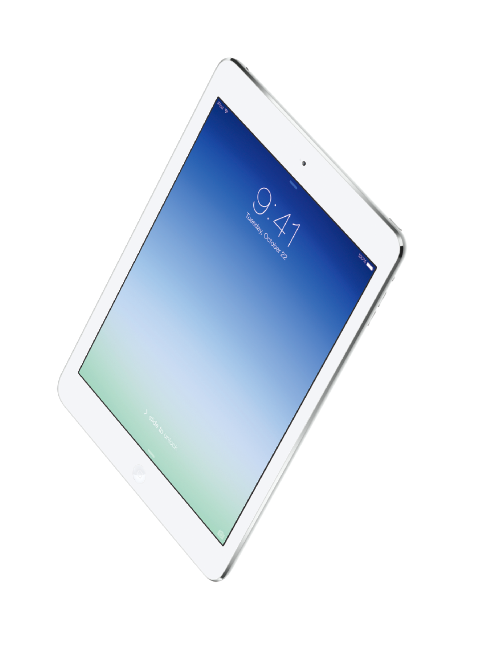More iPad Upgrade Musings – The ‘Book Mystique
Much discussed recently, what with Apple reporting iPad sales shrinkage over two consecutive quarters, is that it had apparently been widely assumed that tablet users would follow a two-year hardware upgrade interval similar to smartphones, but generally they haven’t. Turns out people more typically hang on to their tablets for three years or more, approximating PC hardware upgrade intervals. Which makes sense given that iPad usage more closely emulates laptop than smartphone use in practical terms. The iPad 2 I’m typing this article on is a case in point — now 38 months old and still plenty serviceable.
Personally I think that just two or even three years of pre-obsolescence is absurd for products that cost as much as either mobile devices or PCs. My Mac system replacement interval has stretched from less than three years two decades ago, to somewhat more than four years on my last three upgrade cycles. So far it’s early days with iPads, but the initial precedent being set is in excess of three years.
However, there comes a time, and lately I think the iPad 2’s measly 512 MB od RAM is becoming more of a performance bottleneck than the A5 SoC’s lack of processing power due to my standard operating procedure of keeping lots of apps open. So I’m seriously on the upgrade road, and I’ve been increasingly intrigued (some might say obsessed) by the iPad mini since it got a Retina display with 324 pixels-per-inch dot pitch, A7 silicon and a M7 motion coprocessor overhaul last fall. I’m itching to upgrade to a new iPad, and while I was pretty much indifferent to the original mini due to it not representing any performance upgrade from my old iPad 2, the current one is, as I said, intriguing, with the Retina panel and reportedly 400x faster processor speed than my current ‘Pad. Of course a base price set $100 less than the Air’s makes it even more seductive.
However, whether I’ll ultimately opt for a mini is still up in the air (or Air) so to speak. While there is no longer a gaping performance difference between the mini and the full-size iPad Air, there is still some, with slightly lower CPU clock speed and a narrower color gamut in the smaller machine. Factor in the larger display area, and the Air’s 25 percent higher price becomes arguably justifiable, relatively speaking. Whether selling 16 GB machines — even ones as well designed and built as iPads — for $400 or $500 dollars in 2014 is not gouging a bit, is another matter that pertains to both sizes.
Last week, I visited my “local” (50 miles one way) Apple authorized reseller to give the mini on the demo rack there a test drive — not for the first time. I’m pretty much convinced that I can be reasonably happy two- finger typing on the mini’s virtual keyboard (not that different from the two-finger typing I do on my full-sized iPad), and the mini also facilitates practical thumb-typing in Portrait orientation especially. I thumb-type a bit on the old iPad 2, but the reach is a bit of a stretch (although it would be less of one with the iPad Air’s narrower overall enclosure). Reading text at default point sizes on Websites I checked out didn’t seem problematical.
An equivocation factor is in trying to envision practical real-world use circumstances where the smaller screen size would be a significant problem. I haven’t thought of any so far, but it’s impossible to really know what working on a machine will be like by playing with a showroom demo.
Another cause for hesitation about buying any size iPad right now is that A8 powered new models with Touch ID fingerprint sensors and 8 megapixel cameras are virtually certain to be out by October, A report last week by the Taiwan-based Chinese language Economic Daily News’s Xia Shuxian says volume production of the new iPads should commence in September, so patience should pay off for those who can put off an iPad purchase for up to another three months. I keep telling myself that, anyway.
Bob Buskirk of ThinkComputers reports that the Apple A8 Processor will be clocked at 2 GHz or higher (2.6 GHz for the iPad Air) compared with the current A7 chip that runs at 1.3 GHz – 1.4 GHz, and be based on new founders partner n acronym for Taiwan Semiconductor Manufacturing Company (TSMC)’s 20 nm architecture, which would allow both a performance increase and a decrease in power consumption compared to the 28 nm A7 chips. That would be a substantial increase in processing power over the current models’ already very lively A7 silicon.
PFHub’s Rhian Hunt notes that TSMC is also consulting with Apple on the best ways to upgrade their facilities to handle 16 nanometer production.
I like the sound of that rumored 8 megapixel camera (similar to the one in the iPhone 5s) too. I find the iPad useful for photography whether in the proverbial “best camera is the one you have on you” context, or when I’m in a hurry to get a photo online or to email and don’t have time to fool around with downloading photos from my digital camera.
And there could be even more possibly worth waiting for in the third-generation iPad mini than a faster SoC, fingerprint recognition, and a higher-res camera. Recent supply chain scuttlebutt reported by Xiaojun Hui and Xie Yil, also of the Economic Daily suggests that Apple may be fixing to reignite iPad mini excitement (and hopefully sales) with the third-generation iPad mini, to be renamed mini Air, packed in an enclosure 30 percent thinner than the current iPad mini’s.
You can’t seriously call the current iPad mini with Retina display “fat,” although it did bulk up a tiny bit from the original mini’s 7.2mm to the same 7.5mm thickness as the iPad Air, presumably to accommodate more battery volume in support of the high-resolution screen without increasing the device’s footprint.
So how would Apple pull of a whopping 30 percent slimming of the iPad mini? The Economic Daily reporters say that they’re hearing from their insider moles that the new quad-core A8 processor’s nanometer processing technology will offer lower power demand that would make a smaller battery possible, and there are rumors of a lighter metal alloy (Liquid Metal?) for the housing itself.
I have to say that I’m not blown away by the prospect of a 30 percent thinner iPad mini. The current one seems satisfactorily compact to me, and I’ll keep an open mind, but it’s hard to imagine that there won’t be some degree of compromise involved in going nearly one-third thinner in a rig as small as a mini. Indeed that might ultimately prove the deciding factor in determining which way I jump from my current fence-sit on mini vs. Air. That is if I can hold out for another three months!






